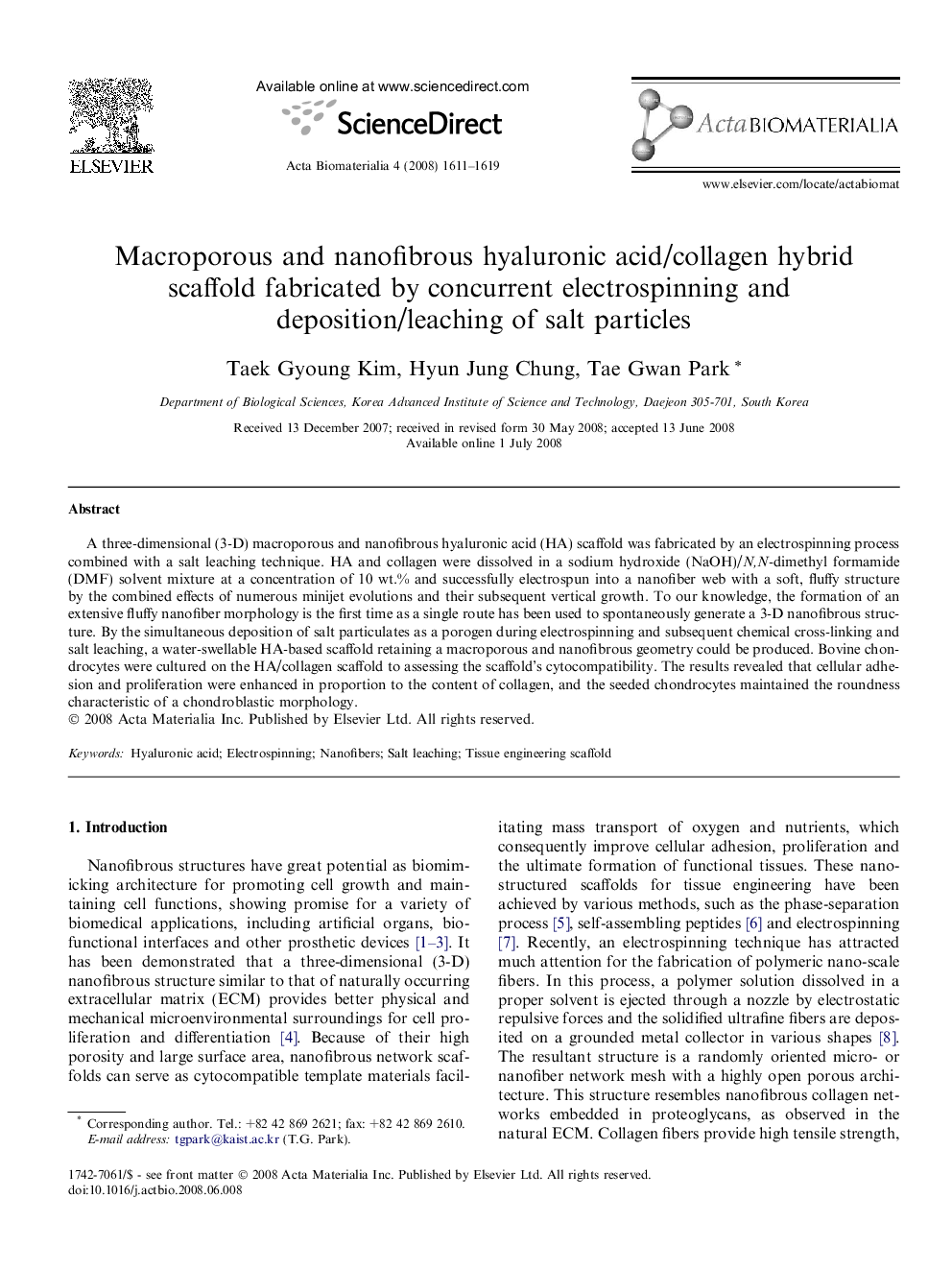| Article ID | Journal | Published Year | Pages | File Type |
|---|---|---|---|---|
| 1733 | Acta Biomaterialia | 2008 | 9 Pages |
A three-dimensional (3-D) macroporous and nanofibrous hyaluronic acid (HA) scaffold was fabricated by an electrospinning process combined with a salt leaching technique. HA and collagen were dissolved in a sodium hydroxide (NaOH)/N,N-dimethyl formamide (DMF) solvent mixture at a concentration of 10 wt.% and successfully electrospun into a nanofiber web with a soft, fluffy structure by the combined effects of numerous minijet evolutions and their subsequent vertical growth. To our knowledge, the formation of an extensive fluffy nanofiber morphology is the first time as a single route has been used to spontaneously generate a 3-D nanofibrous structure. By the simultaneous deposition of salt particulates as a porogen during electrospinning and subsequent chemical cross-linking and salt leaching, a water-swellable HA-based scaffold retaining a macroporous and nanofibrous geometry could be produced. Bovine chondrocytes were cultured on the HA/collagen scaffold to assessing the scaffold’s cytocompatibility. The results revealed that cellular adhesion and proliferation were enhanced in proportion to the content of collagen, and the seeded chondrocytes maintained the roundness characteristic of a chondroblastic morphology.
